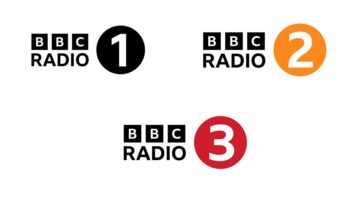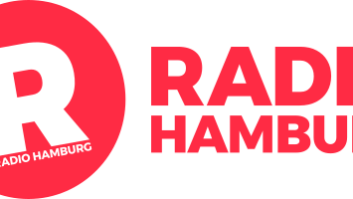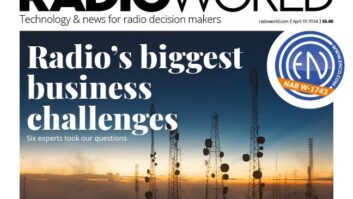Originally published June 3
NEW YORK The company that leases the aural service of a Channel 6 low-power TV station at 87.7 MHz in this city is armed with an aggressive expansion plan, eyeing the top 15 markets in the country. But it appears to face limited opportunities in the effort to grow its brand nationwide.
The New York music station is programmed by Mega Media Group, which leases airtime for its Pulse 87.7 FM format on the aural services of low-power TV WNYZ(LP), licensed to Island Broadcasting Co.
Industry critics of the arrangement say this is simply a Channel 6 LPTV acting as an FM radio station.
Island Broadcasting meets minimum FCC requirements for low-power TV because it still transmits a video signal, most often locally produced entertainment videos, even though it leases its aural service to Mega.
A handful of other LPTV licensees in this country appear to have embraced the controversial practice, which Radio World explored in the Dec. 17 issue. Such stations have been nicknamed “Franken FMs” in engineering circles because of their unorthodox nature.
Several communications attorneys have said the Federal Communications Commission appears to be reviewing such arrangements though the licensees apparently are operating within the rules. Stations are authorized by the FCC to carry video content that can be received on analog televisions in addition to audio programming receivable on FM radios.
Meanwhile, Mega Media would like to expand the concept.
The company expected to begin broadcasting its Pulse 87.7 dance brand in Washington on June 1, in a similar arrangement with WDCN(LP) on its aural service at 87.7 FM. WDCN is licensed to Signal Above LLC.
“We are pursuing revenue sharing agreements with broadcasters in the top 15 radio markets. This allows us to enter markets without the upfront capital burden of purchasing frequencies,” said Mega Media CEO Alex Shvarts.
‘Proven format’ in New York
Shvarts also announced arrangements in March to launch the dance format in Chicago and Los Angeles. However, Mega and Venture Technologies Group could not reach final agreement to lease the aural services of Venture stations KSFV(LP) in Los Angeles and WLFM(LP) in Chicago, according to Shvarts and Venture Chairman Lawrence Rogow. Those letters of intent have since expired.
Venture already airs “radio” formats of its own in those markets: KSFV in Los Angeles offers Spanish-language programming, and WLFM(LP) in Chicago airs country programming — branded as “The L” — both on 87.7 MHz.
“We are a content provider and have a revenue sharing strategy that we are using to enter these markets. We believe we have a proven format in New York with some major advertisers coming on board,” Shvarts said. “However, in this current economy it has to make sense for us to enter a market and still be able to adequately promote a new station.”
Shvarts described Pulse as a “top 40 CHR approach with a element of dance to it.” Joel Salkowitz, an alumnus of music station WQHT(FM) in New York, is programming the Pulse content for Mega’s stations.
A recent announcement by Arbitron could help legitimize the impact of Franken FMs in major markets, said industry observers.
The ratings company has begun including the aural service of Channel 6 low-power TV stations that operate on 87.7 FM in its audience estimates for the Portable People Meter. Mega announced in late April that Pulse87 reached a total weekly audience of 705,000 in the first week of that month; this increased from a weekly average of 671,200 in the month of March. Shvarts said being included in the Arbitron ratings report makes the station a viable competitor and allows the sales team to compete for major advertising dollars.
Shvarts said Pulse 87.7 is subscribing to Arbitron data in New York and expects to in Washington later this year.
Industry observers say what Mega Media, Venture and others are doing is an interesting use of LPTV spectrum but they don’t expect a stampede to follow suit.
“This would work in maybe a handful of markets; but these are really marginal radio opportunities against the biggest players in the industry,” said Larry Patrick, managing partner at Patrick Communications, a media brokerage and investment banking firm.
“Mega may be able to find a half-dozen of so opportunities but it will remain largely a fringe of the industry and not mainstream.”
Future unclear for 6
Stations like these will face another obstacle when low-power TV licensees eventually are forced to transition to digital and Channel 6 spectrum is repurposed, Patrick said.
Low-power television stations currently have no mandatory digital transmission deadline.
“It seems like a lot of smoke and little fire for technology that could soon be supplanted. The conversion of the LPTV licensees to digital effectively ends this opportunity,” Patrick said.
Shvarts said any such FCC mandate remains years down the road.
“When is eventually? I don’t envision this happening until 2012 or maybe even later. We will obviously be looking for full-power opportunities at that point,” Shvarts said.
LPTVs acting as FMs also face a competitive disadvantage through their very location off the bottom of the FM band, said John Sanders, an analyst with Bond & Pecaro.
“Simply put, a lot of radios cannot pick up 87.7 MHz. Most people won’t even scan through that area. And remember, winning radio formats are easily imitated by more powerful stations. Even if Mega does well for a time, it may not last,” Sanders said.
While the radio station in New York announced it had more than 700,000 cume persons age 6 and older during a specific week in April, it was unranked in Arbitron’s most recent listener survey of persons 12+.
Shvarts said he is also pursuing revenue sharing agreements with full-power commercial radio broadcasters in the top 15 radio markets.
“We feel there are plenty of under-performing radio stations out there looking for winning content.”
The Mega Media Group has approximately 20 employees working in its radio division in Brooklyn. Launched in 2004, MMG is a multimedia entertainment holding company that offers a range of services including music and video production and distribution.












